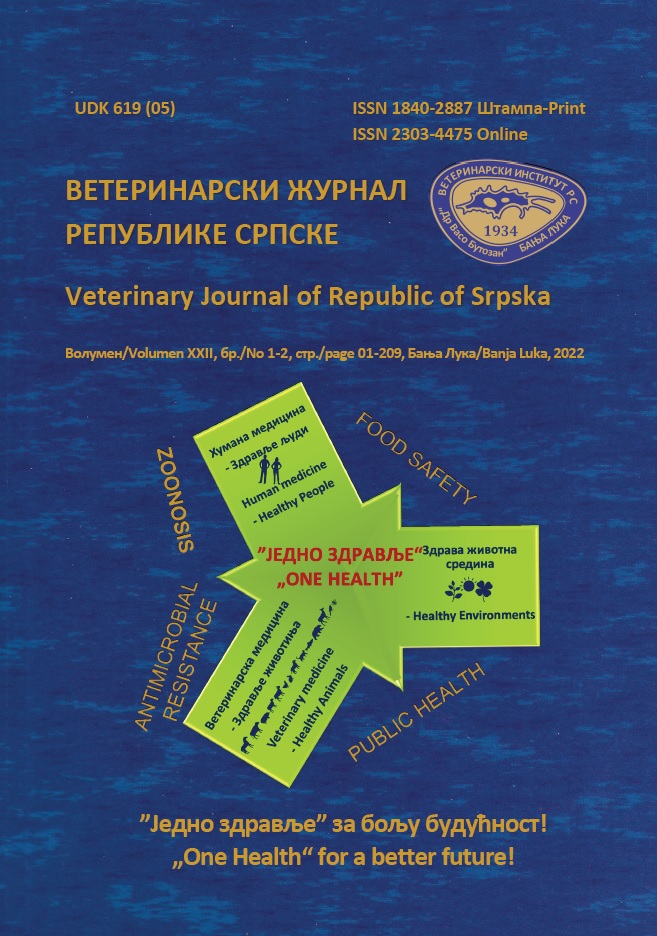ANTIHELMINTIC POTENTIAL OF CORIANDER ESSENTIAL OIL (CORIANDRUM SATIVUM L.) IN SHEEP
DOI:
https://doi.org/10.7251/VETJEN2201114SAbstract
The development of anthelmintic resistance in sheep gastrointestinal nematodes to commercial anthelmintics has led to enormous economic losses in many parts of the world. For this reason, new sustainable strategies for the control of these parasites are being actively searched, which include the use of different alternatives such as plant essential oils. The aim of this study was to determine the chemical composition of the essential oil of coriander (Coriandrum sativum L.) and to test its anthelmintic potential against gastrointestinal nematodes of sheep. Qualitative and semi-quantitative chemical characterization of the essential oil was performed using gas chromatography coupled with mass spectrometric detection (GC-MS analysis). The anthelmintic potential of the essential oil was tested using the in vitro egg hatching test (EHT), which was carried out with eight different concentrations of the tested oil (50; 12.5; 3.125; 0.781; 0.195; 0.049; 0.025 and 0.0125 mg/mL). Thiabendazole in concentrations of 0.025 and 0.0125 mg/mL was used as the positive control, and the emulsifier 3% Tween 80 v/v and distilled water was used as the negative control. GC-MS analyzes revealed a rich chemical composition of the tested oil, where a total of 17 different ingredients from different chemical groups were found, of which 15 were identified. The dominant ingredient was linalool (84.5%) along with γ-terpinene (5.04%),camphor (3.26%) and α-pinene (2.88%). The EHT results showed a high anthelmintic potential of coriander oil with inhibition of larval hatching, i.e. an ovicidal effect of 29.0-88.7% depending on the concentration, with an IC50 concentration of 0.04 mg/mL and a clear dose-dependent effect (R2= 0.90). This study confirmed the possible importance of botanical anthelmintics in the sustainable control of nematodes in animals and the fight against anthelmintic resistance. The obtained results indicate a possible role of coriander in future therapeutic approaches to infections caused by gastrointestinal nematodes of sheep, after further in vivo tests and toxicity studies.

